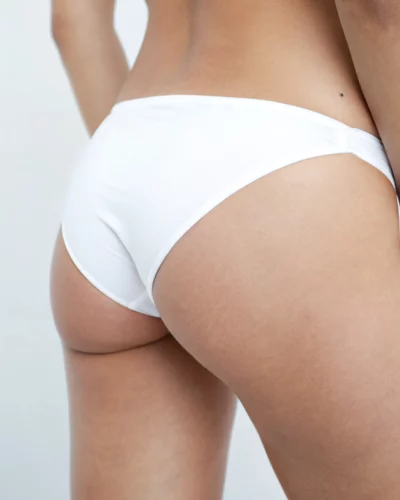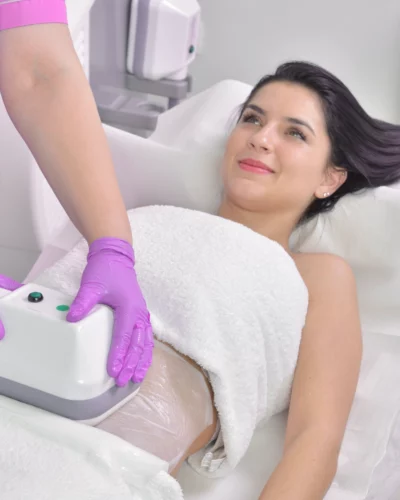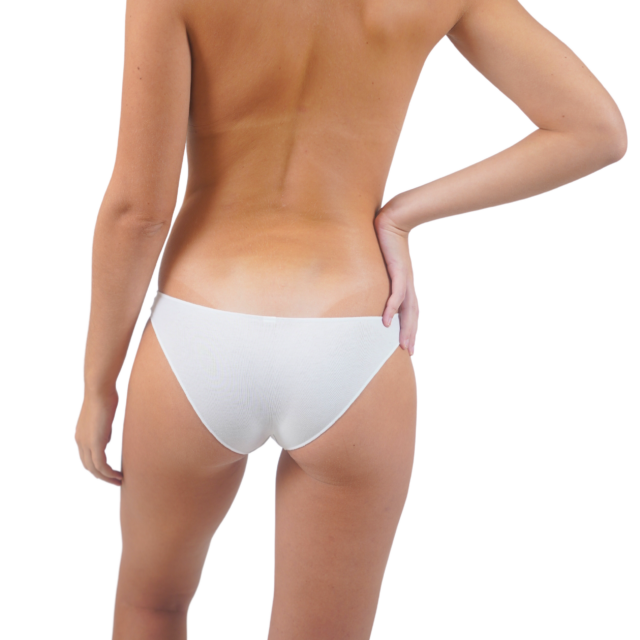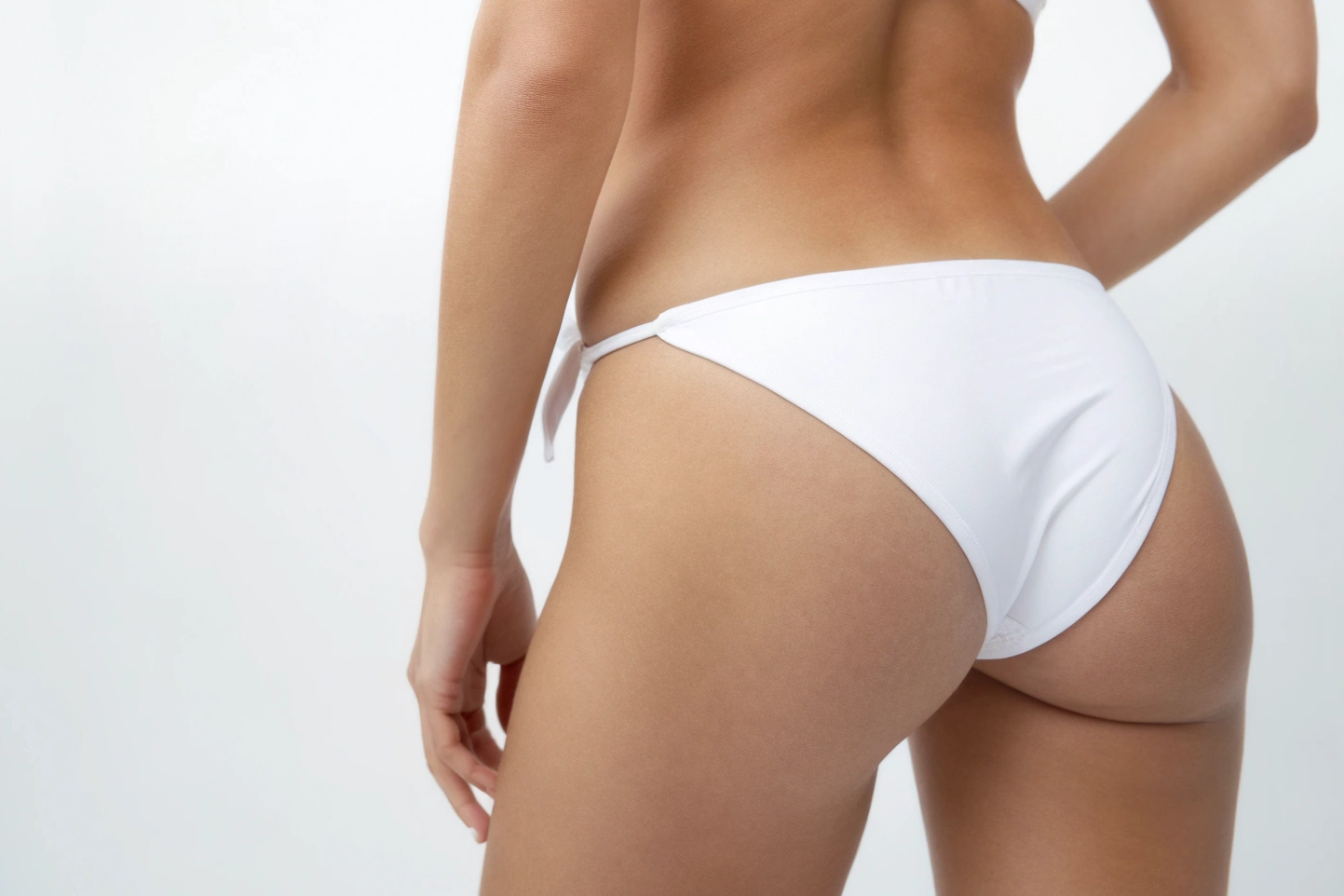Reducing buttock volume
Many women are dissatisfied with the volume of their buttocks, especially when they appear too large. One of the most frequently reported problems is saddlebags. Saddlebags are fatty deposits on the back of the thighs and buttocks that encourage the appearance of cellulite.
Saddlebags can form early in life and develop over the course of a woman’s life as a result of hormonal or weight variations, and are not always linked to a healthy lifestyle. It is sometimes hereditary. Some women are more inclined than others to store fat on their hips, buttocks and thighs.

Liposuccion
La liposuccion, également connue sous le nom de « liposculpture », de « lipoplastie » et de « lipoaspiration », est une procédure qui façonne le corps en éliminant les graisses résistantes à la perte de poids et à l’exercice. La liposuccion ne peut cependant se substituer à une bonne nutrition et à une bonne activité physique.

Cryolipolyse
La cryolipolyse est une technique de destruction des cellules graisseuses par le froid, couramment utilisée à travers le monde comme complément ou alternative, dans certains cas, à la lipoaspiration.
The benefits of buttock reduction treatments
- Targeted reduction: Eliminate localized fat deposits for a more harmonious silhouette
- Lasting results: Eliminated fat cells do not regenerate if the lifestyle is healthy
- Various options: Surgical (liposuction) and non-invasive (cryolipolysis) techniques
- Aesthetic enhancement: Redefines the contours of the buttocks and thighs
- Rapid recovery: Reduced downtime for non-invasive procedures
- Customization: Tailored to individual needs
- Effective treatment for saddlebags: Significant fat and cellulite reduction

Frequently asked questions
How to reduce the volume of your buttocks?
Are you looking for a slimmer figure, but are still bothered by an oversized buttock? There are effective solutions for reducing your buttocks quickly, and with optimum results. First and foremost, natural methods such as sport and a balanced diet are essential for weight management, and are still the best way to slim down your buttocks.
However, these two methods may not be sufficient to significantly reduce buttock volume. Genetic predisposition can be an obstacle to slimming the figure. Saddlebags, for example, can be very difficult, if not impossible, to eliminate.
Recourse to surgery or cosmetic medicine is strongly recommended if physical activity and a healthy diet have not yielded optimal results.
How do you choose the best method for you?
The first method to consider is sport and a healthy diet. Combined, they can help reduce buttock volume considerably. However, when results are limited, liposuction and cryolipolysis are two highly effective methods to consider.
Liposuction is a surgical method for sculpting the figure by removing excess fat from the buttocks. Results are rapid and long-lasting, making the procedure highly effective. Cryolipolysis is also effective, and is a non-invasive procedure, ideal for those who don’t wish to undergo surgery. It involves destroying fat cells using cold. Unlike liposuction, results are visible after several weeks, but recovery time is very short.
In order to choose the method that best suits your needs and expectations, we invite you to discuss this with the expert who will be taking care of you at your first consultation appointment.
How can I get rid of my saddlebags?
Saddlebags are the accumulation of fat in the hips and thighs. Saddlebags are often the cause of complexes in both men and women, which is why many women want to get rid of them. Saddlebags are generally due to genetic or hormonal factors, or simply to lifestyle and diet. In this case, physical activity and a change of diet can greatly reduce saddlebags. However, if the cause is genetic or hormonal, only surgery or aesthetic medicine can guarantee considerable results.
How do you maintain results after surgery?
While surgery can drastically change the appearance of your figure, it’s important to maintain the results obtained by adapting your daily habits. Maintaining a healthy diet and regular physical activity are important conditions for good post-operative results. It’s also essential to follow the post-operative recommendations laid down by your surgeon, so as to recover properly and maximize your results.
Are the results of cryolipolysis permanent?
Cryolipolysis uses cold to eliminate localized fat. This destruction of fat cells can guarantee lasting results, provided you maintain a healthy lifestyle. In principle, fat cells have been eliminated or removed in certain areas and do not regenerate. However, a more or less significant weight gain after the procedure can lead to the formation of new fat cells in untreated areas, or to volume gain in the remaining fat cells.
Similarly, the body can undergo natural changes withage, which may slightly affect theappearance of treated areas. While fat cells are permanently eliminated, the appearance of the silhouette may indeed change.
How long does it take to recover from liposuction?
The recovery process after liposuction is divided into different phases. The immediate post-operative phase, during which the patient is monitored for possible complications. This is followed by the initial recovery phase, which lasts one to two weeks. After this phase, patients can slowly resume light activities, and eventually return to work. Finally, the full recovery phase can be observed after four to six weeks, after which patients resume their usual activities, including strenuous exercise.
The results of liposuction are then increasingly visible, not to mention the fact that swelling can continue to reduce for several months. It can take from 4 to 6 weeks for recovery to be complete, but this depends on the patient. It is essential to follow the post-operative instructions, i.e. medical check-ups and the wearing of compression garments.
How much does liposuction or cryolipolysis cost?
The price of liposuction depends on the number of areas to be treated. Prices start at 2,950 euros. This price includes all services, such as pre-operative consultations, anesthesia, post-operative care, etc.
Cryolipolysis can be more economical. The information consultation and estimate are free, and the cost of a session on one area is 325 euros. Generally speaking, one to three sessions per area are required for satisfactory results, and the price decreases according to the number of sessions planned. Thus, for two sessions on the same area, the price rises to 600 euros, and to 825 for three sessions. On the other hand, two sessions on the abdomen cost 540 euros. So, depending on the number of areas to be treated, cryolipolysis may be a more cost-effective solution than liposuction.




